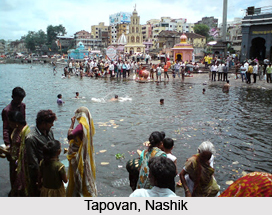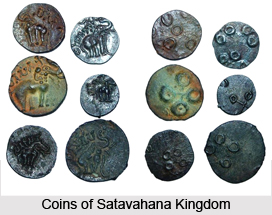 History of Nashik traces back to the early Stone Age, when a nucleus of settlement was made near the River Gangavadi. Presently, Nashik is a district head quarters located on the banks of Godavari and is 185 km away from Mumbai. The climate of this city is moderate, and is located at 635 m above mean sea level. The city has developed on both the banks of Godavari, which divides the city into almost equal halves.
History of Nashik traces back to the early Stone Age, when a nucleus of settlement was made near the River Gangavadi. Presently, Nashik is a district head quarters located on the banks of Godavari and is 185 km away from Mumbai. The climate of this city is moderate, and is located at 635 m above mean sea level. The city has developed on both the banks of Godavari, which divides the city into almost equal halves.
The history of Nashik dates back to Ramayana and there are many references of the city in many epics as well as Vedas, however, today the city has developed into a metropolis with a population of 14 lakh souls. The city since its ancient days has developed on the banks of Ganga with religious significance. Today, Nashik is also a flourishing Industrial Centre as well as an educational center.
The ancient history of Nashik can be derived from archaeological excavations and it is found that the territory around Nashik was occupied in the early Stone Age. Tools of trap rock characteristic of that time were found buried in the riverbed at Gangavadi, 16 Km North - West of Nashik. Agastya, the renowned sage was the first amongst the Aryan clan to cross the Vindhya Mountains and live on the banks of the Godavari. Other sages followed Agastya and the group of hermitages of the bank of the Godavari was called "Janasthana". Lord Ram along with his younger brother Lakshman and wife Sita met Agastya, and he gifted Ram with bow and two quivers presumable to fight the rakshasas. He also advised him to settle down at Panchavati, so called because of the five great banyan trees, which grew there. Panchavati was then at the outskirts of the Dandakaranya forest. It is from here that Ravan of Lanka seized Sita. Later on poets like Valmiki, Kalidas, the dramatist bhavbhuti did much research and found in "Padmapur" as Nashik was then known, great inspiration.
 In the medieval history of Nashik, all this territory was included in Ashok`s mighty empire. Later during the era of the Satavahana kingdom the Nashik district became very prosperous as it was based on the trade route to Broach. The city was named as "Gulshanabad" during Mughal period, in admiration of beauty of Nashik. The old name was reinstated when Peshwas took over in 1751. Raghobadada and Anandibai of Peshwas stayed at Nashik during later part of their life. By 1818, Nashik was considered as a town with two palaces, magnificent buildings and beautiful gardens and vineyards
In the medieval history of Nashik, all this territory was included in Ashok`s mighty empire. Later during the era of the Satavahana kingdom the Nashik district became very prosperous as it was based on the trade route to Broach. The city was named as "Gulshanabad" during Mughal period, in admiration of beauty of Nashik. The old name was reinstated when Peshwas took over in 1751. Raghobadada and Anandibai of Peshwas stayed at Nashik during later part of their life. By 1818, Nashik was considered as a town with two palaces, magnificent buildings and beautiful gardens and vineyards
On April 19,1818 Nashik was annexed by the British. During the freedom struggle of 1857, Nashik was the spot of considerable disturbance. The struggle subsided by 1860, and Nashik once again retained peace. Nashik Municipality was formed in 1864. In 1869, Nashik was made a District with its present 13 talukas. Railway tracks were laid and Nashik Road railway station was also formed. Nashik Road subsequently grew with the establishment of India Security Press, Central Jail, and the Distillery, which then existed for the English soldiers at Deolali. Nashik eventually became a flourishing commercial centre where artisans were skilled in making utensils and smiths excelled in making silver and gold ornaments.
Nashik was always prominent as a center of revolutionary activities; Anant Kanhere, a great revolutionist, fired at Mr.Jackson, the then Collector of Nashik on the night of 21st December 1909, while he was watching a play at Vijayanand Theatre. Mr Jackson died on the spot, which resulted in arrests, trails and sentences. Mahatma Gandhi`s non-cooperation movement found its strong platform of forest satyagrahas and underground activities here in Nashik as well. Dr. Ambedkar later organized his temple entry movement for the abolition of untouchability and mass Satyagraha was organized in 1932. In 1950, Session of India National Congress was also held at Nashik at a place now called Nehrunagar (between Nashik and Nashik Road). The history of Nashik is not only interesting but inspiring enough to depict how a primitive civilization has grown to a metropolitan city with gradual success.



















